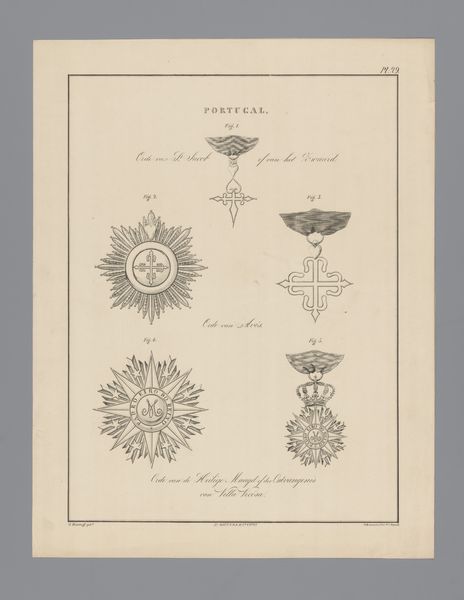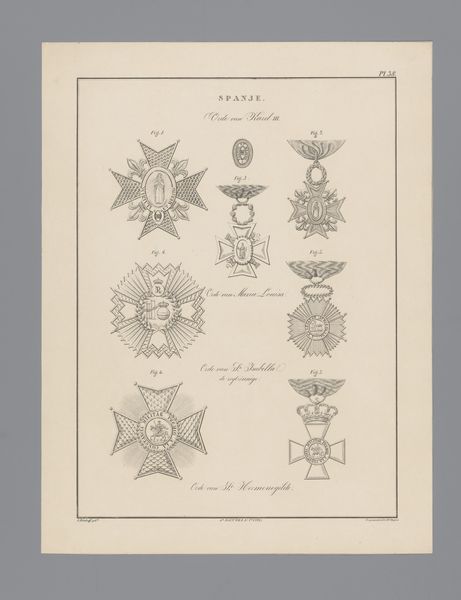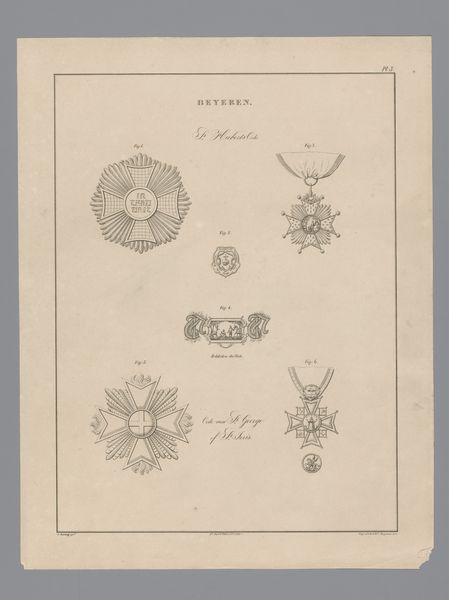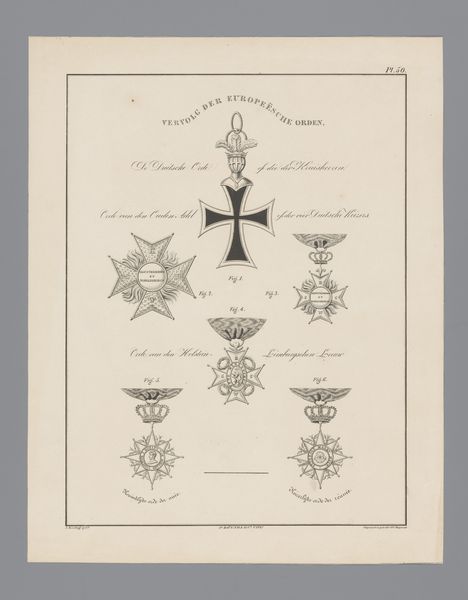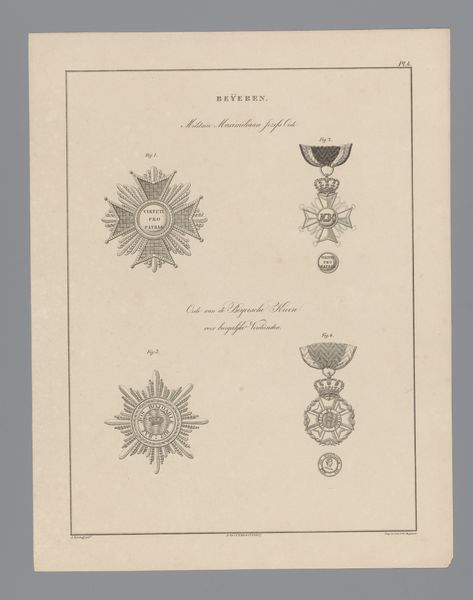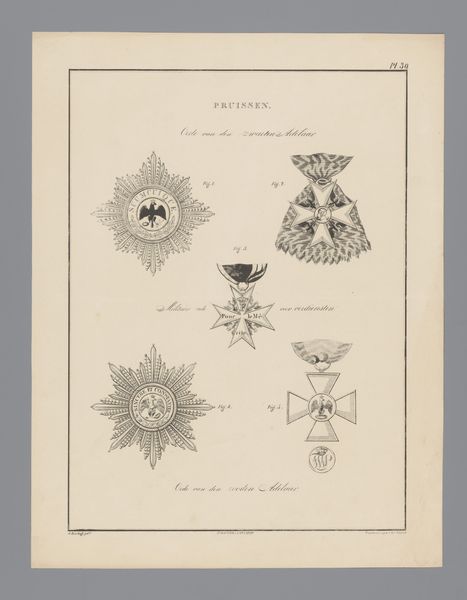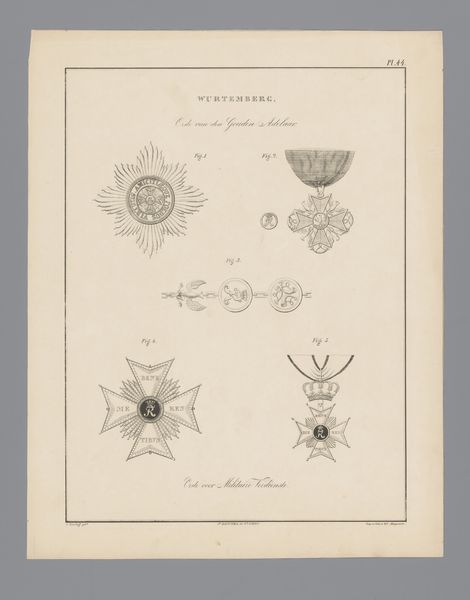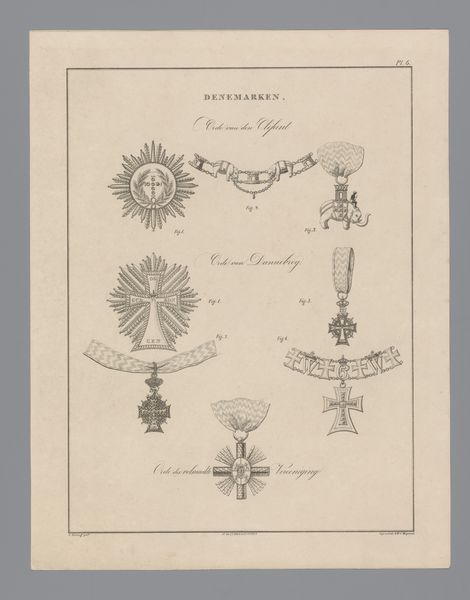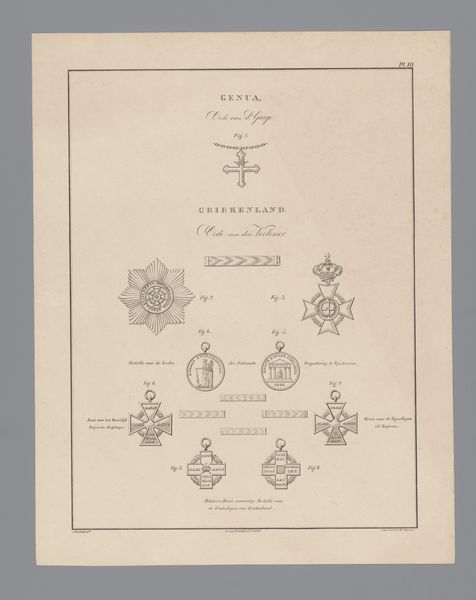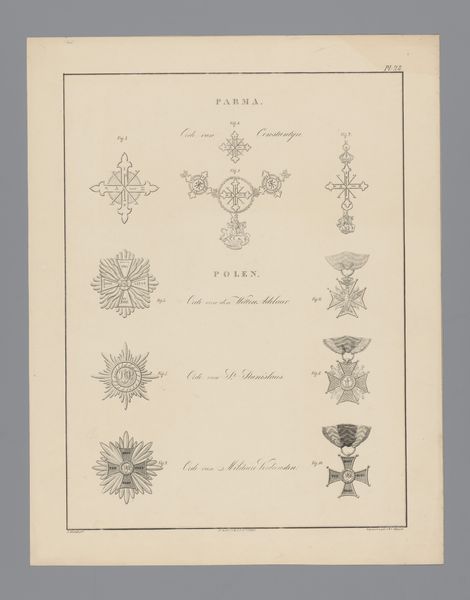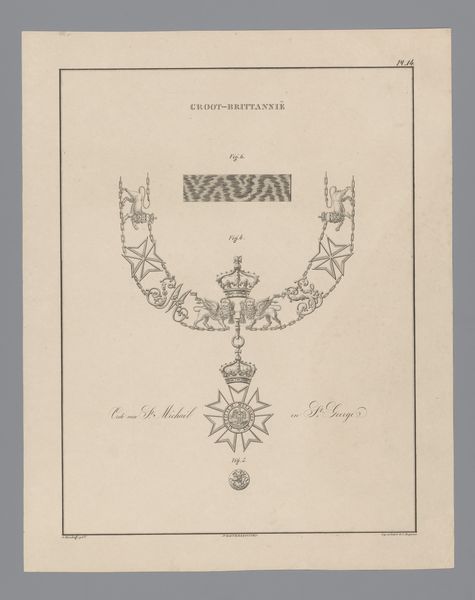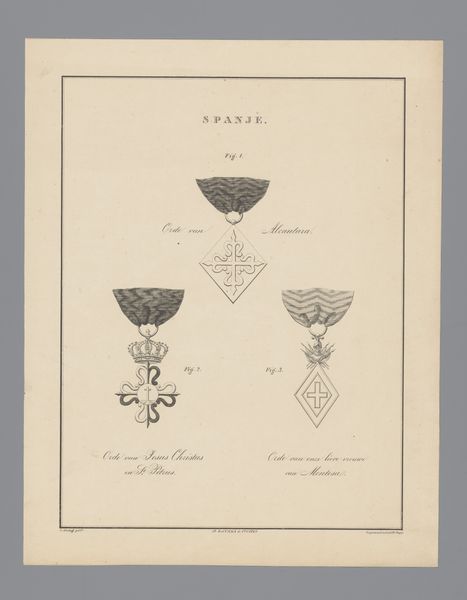
print, engraving
#
aged paper
# print
#
old engraving style
#
historical fashion
#
geometric
#
line
#
history-painting
#
academic-art
#
engraving
Dimensions: height 410 mm, width 320 mm
Copyright: Rijks Museum: Open Domain
Curator: This print, titled "Ridderorden uit Rusland," or "Orders of Knighthood from Russia," created in 1843 by Willem Charles Magnenat, presents a visual compendium of Russian decorations. Editor: It has the cool detachment of a technical drawing, but something about these radiant geometric forms feels powerful. Are they all rendered in the same way? Curator: All the depicted items are captured using engraving techniques, demonstrating precision and care in production, even in the multiple replication required by printmaking. One must ask, how was such precise labor organized, and what class status did the artisans involved occupy? Editor: Right, and what did these objects mean to those who created and awarded them? It seems these orders, dedicated to figures like St. George, were linked to valor, likely reserved for specific identities within a very strict hierarchical social structure. How are such symbols instrumental in maintaining class divisions? Curator: Precisely! The orders embody a fascinating nexus of gender, class, and nationhood in 19th-century Russia. These weren't simply pretty trinkets; they signified membership to the Russian elite, as tools in the theatre of power, if you will. What does it mean that these signifiers are literally 'ordered' onto this page? How did this image function? Editor: It’s intriguing to see them detached from the bodies they adorned, categorized almost like specimens. Does that flatten them, turning symbols of fierce status into generic artifacts of labor, like components in a watch mechanism? Curator: Perhaps... Yet I wonder how many viewers this image may have motivated to claim similar honor? Magnenat's careful composition presents these medals as both aesthetic objects and cultural symbols of societal rank during a turbulent historical moment for Russian identities. Editor: For me, viewing these representations forces us to face uncomfortable legacies and social constructions encoded within them, and recognize their continued presence, re-coded, in contemporary reward systems and branding. Curator: Indeed, there are many lingering threads between historical practices and our own times that become more clear when we critically interrogate such seemingly neutral visual catalogues as this.
Comments
No comments
Be the first to comment and join the conversation on the ultimate creative platform.
